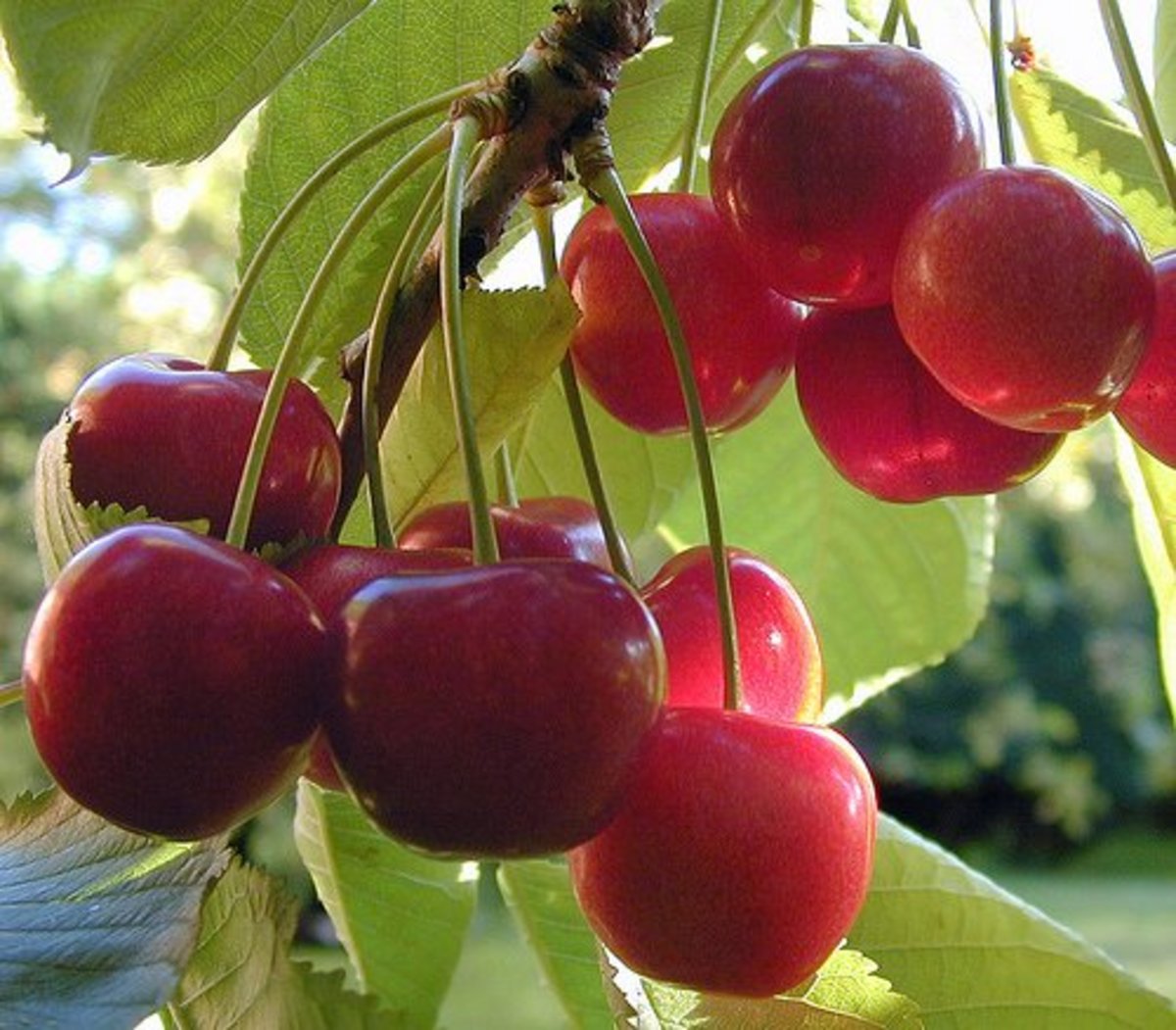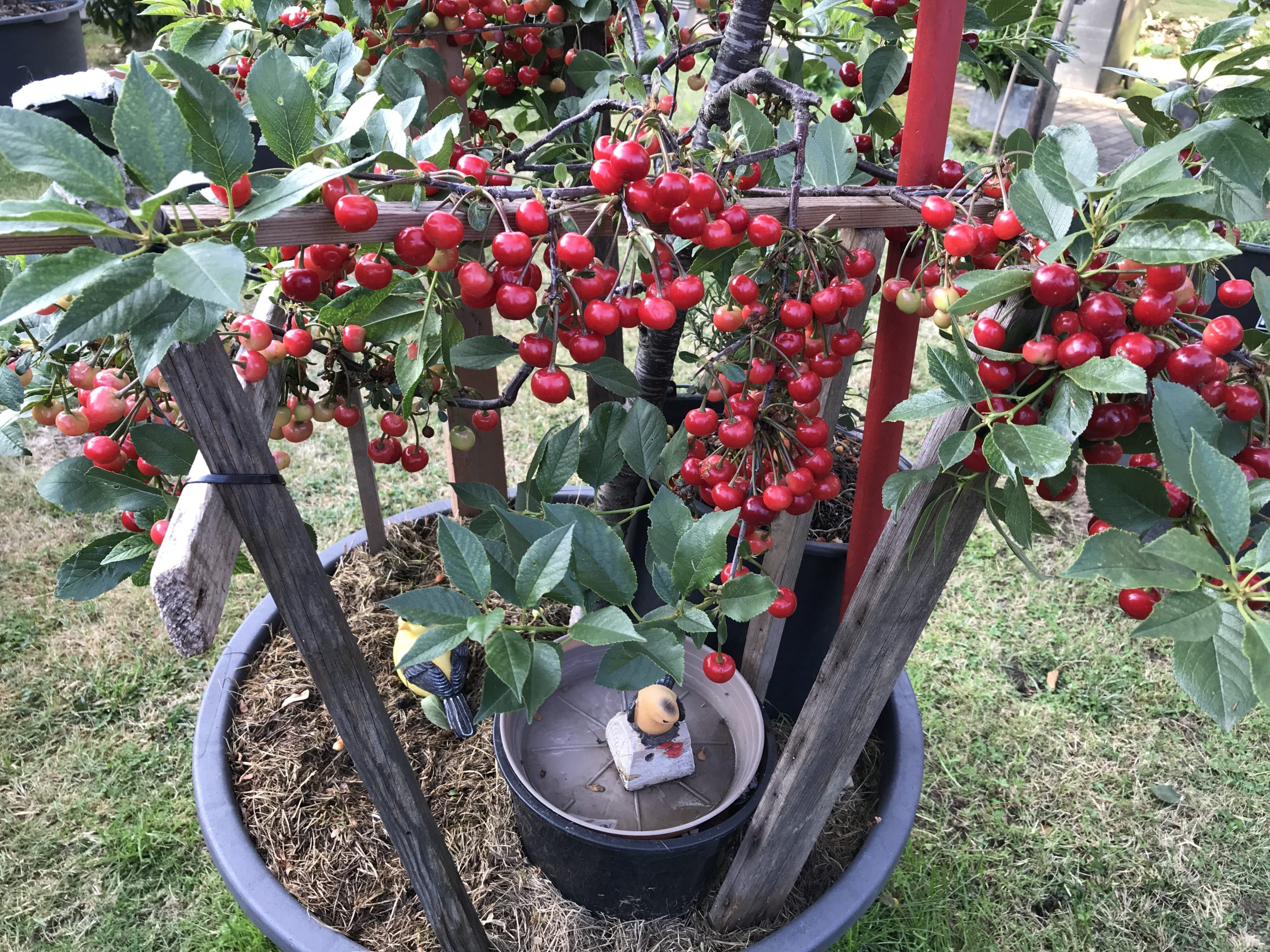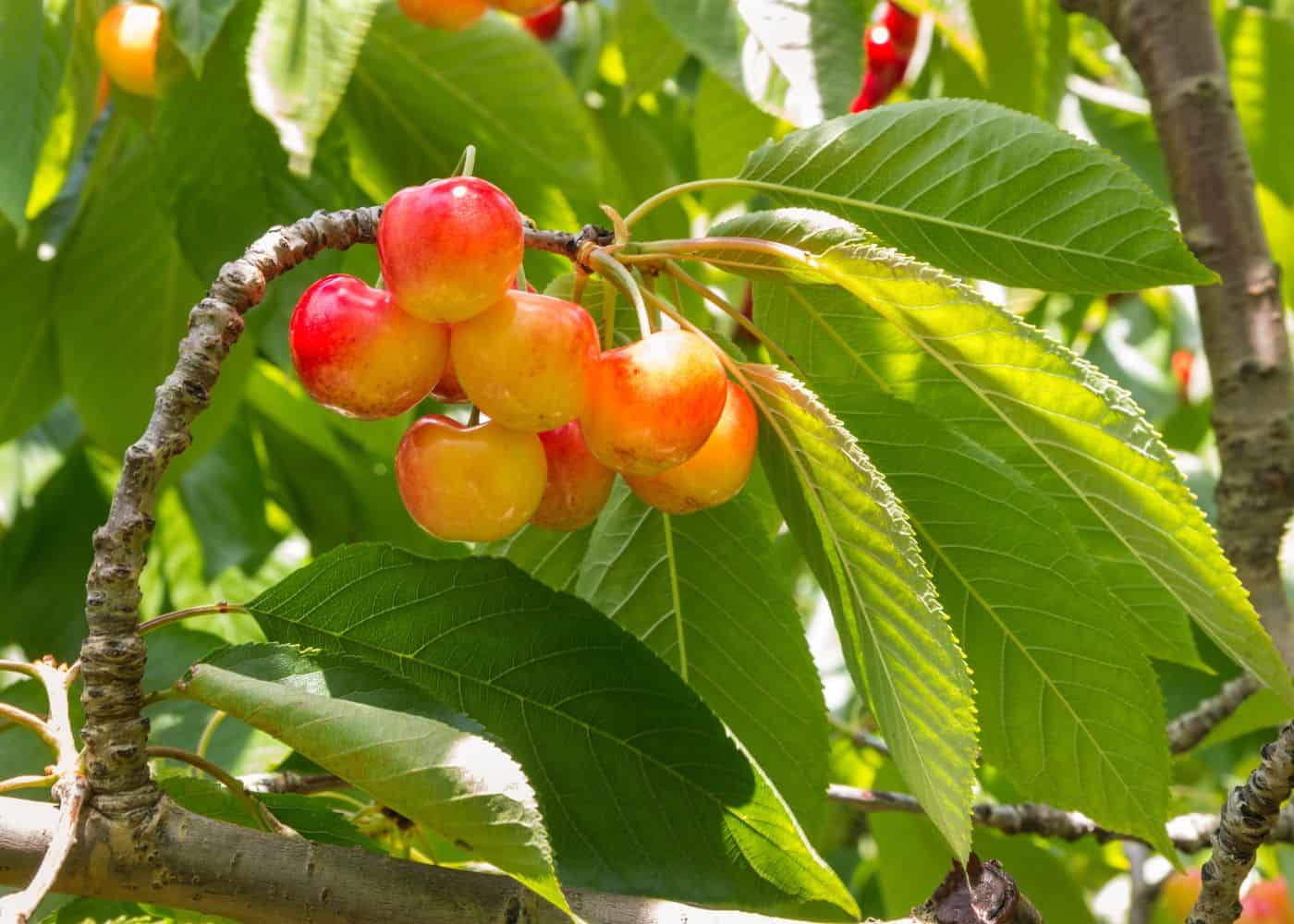Understanding the Best Season for Cherry Tree Planting
Planting cherry trees at the right time of year is crucial for their growth and development. Cherry trees require a specific set of conditions to thrive, and planting them during the optimal season can make all the difference. When deciding when to plant cherry trees, it’s essential to consider the climate, weather, and soil conditions in your region.
In general, the best time to plant cherry trees is during the early spring or fall, when the weather is cooler and rainfall is more consistent. This allows the trees to establish a strong root system before the heat of summer or the cold of winter. Planting in the spring also gives the trees a head start on the growing season, allowing them to produce fruit within a few years.
However, the exact timing of cherry tree planting depends on your location and climate. In areas with mild winters, cherry trees can be planted in the fall, while in regions with harsh winters, it’s best to plant in the early spring. It’s also important to avoid planting during extreme weather conditions, such as during a drought or when the soil is waterlogged.
Proper root development is also critical for cherry tree growth. When planting, make sure the roots are spread out evenly and the tree is planted at the same depth as it was in the nursery. This will help the tree establish a strong root system and reduce the risk of disease and pests.
By planting cherry trees at the right time of year and providing them with the right conditions, you can set them up for success and enjoy a bountiful harvest for years to come. Whether you’re a seasoned gardener or just starting out, understanding the best season for cherry tree planting is essential for achieving optimal growth and fruit production.
The Role of Climate and Weather in Cherry Tree Planting
Climate and weather conditions play a significant role in the growth and development of cherry trees. Understanding how these factors impact cherry tree growth can help you plan and prepare for optimal growth. When deciding when to plant cherry trees, it’s essential to consider the specific climate and weather conditions in your region.
Chill hours, or the amount of time a cherry tree spends in temperatures between 32°F and 45°F (0°C and 7°C), are critical for cherry tree growth. Cherry trees require a certain number of chill hours to break dormancy and produce fruit. In regions with mild winters, cherry trees may not receive enough chill hours, which can impact fruit production.
Frost is another critical factor to consider when planting cherry trees. Cherry trees are sensitive to frost, and late frosts can damage or destroy blossoms and fruit. In regions with late frosts, it’s best to plant cherry trees in the spring, after the last frost date.
Drought is also a significant concern when planting cherry trees. Cherry trees require consistent moisture levels, especially during the first year after planting. In regions with low rainfall, it’s essential to provide supplemental watering to ensure the tree receives enough moisture.
By understanding the role of climate and weather in cherry tree growth, you can plan and prepare for optimal growth. Whether you’re planting in a region with mild winters or harsh summers, knowing how to adapt to the specific climate and weather conditions can help you grow a healthy and productive cherry tree.
Preparing the Soil for Cherry Tree Planting
Preparing the soil before planting cherry trees is essential for optimal growth and development. Cherry trees prefer well-draining, fertile soil with a pH between 6.0 and 7.0. Testing the soil pH and nutrient levels can help determine if any amendments are needed.
Adding organic matter such as compost or well-rotted manure can improve soil fertility and structure. This can help cherry trees establish a strong root system and promote healthy growth. Removing debris and weeds from the planting area can also help prevent competition for water and nutrients.
Soil preparation is especially important when planting cherry trees in areas with poor soil quality. In regions with heavy clay or sandy soils, adding organic matter can help improve soil structure and fertility. In areas with high pH levels, adding elemental sulfur or peat moss can help lower the pH and create a more favorable environment for cherry tree growth.
When preparing the soil for cherry tree planting, it’s also essential to consider the tree’s root system. Cherry trees have a deep taproot that can grow up to 10 feet deep, so it’s crucial to loosen the soil to a depth of at least 12 inches to allow for proper root development.
By preparing the soil properly before planting cherry trees, you can give them the best chance to establish a strong root system and promote healthy growth. Whether you’re planting in a region with poor soil quality or optimal conditions, proper soil preparation is essential for optimal cherry tree growth.
Planting Cherry Trees in the Spring vs. Fall: Which is Better?
When it comes to planting cherry trees, one of the most common debates is whether to plant in the spring or fall. Both seasons have their advantages and disadvantages, and the best time to plant will depend on your specific climate and region.
Planting cherry trees in the spring can be beneficial in regions with cold winters. Spring planting allows the tree to establish itself before the heat of summer, and the soil is typically moist from spring rainfall. However, spring planting can also be challenging in regions with late frosts, which can damage or destroy blossoms and fruit.
On the other hand, planting cherry trees in the fall can be beneficial in regions with mild winters. Fall planting allows the tree to establish itself before the winter, and the cooler temperatures can help reduce stress on the tree. However, fall planting can also be challenging in regions with early frosts, which can damage or destroy the tree.
When deciding whether to plant cherry trees in the spring or fall, it’s essential to consider the specific climate and weather conditions in your region. In general, spring planting is best for regions with cold winters, while fall planting is best for regions with mild winters.
Regardless of whether you plant in the spring or fall, it’s crucial to choose a time when the weather is mild and the soil is moist. This will give your cherry tree the best chance to establish itself and promote healthy growth.
When to plant cherry trees is a critical decision that can impact the success of your tree. By understanding the advantages and disadvantages of spring and fall planting, you can make an informed decision and give your cherry tree the best chance to thrive.
What to Expect After Planting Cherry Trees: Growth Stages and Timeline
After planting cherry trees, it’s essential to understand the growth stages and timeline to ensure optimal growth and development. Cherry trees go through several growth stages, including germination, sapling, and maturity.
Germination typically occurs within 1-3 weeks after planting, depending on weather conditions and soil quality. During this stage, the seedling will develop its first set of leaves and begin to establish its root system.
The sapling stage typically lasts for 1-2 years, during which the tree will develop its root system and grow to around 1-2 feet tall. During this stage, it’s essential to provide regular watering and fertilization to promote healthy growth.
After the sapling stage, the tree will enter the maturation stage, which can last for several years. During this stage, the tree will continue to grow and produce fruit. Cherry trees typically take around 3-5 years to produce fruit after planting, depending on factors such as climate, soil quality, and pruning techniques.
Understanding the growth stages and timeline of cherry trees can help you plan and prepare for optimal growth. By providing the right conditions and care, you can help your cherry tree thrive and produce delicious fruit for years to come.
When to plant cherry trees is a critical decision that can impact the success of your tree. By understanding the growth stages and timeline, you can make an informed decision and give your cherry tree the best chance to thrive.
Tips for Planting Cherry Trees in Containers or Indoor Spaces
Planting cherry trees in containers or indoor spaces can be a great way to enjoy these beautiful trees in small spaces. However, it requires careful consideration of several factors, including lighting, temperature, and humidity.
When planting cherry trees in containers, it’s essential to choose a container that is at least 12-18 inches deep and has good drainage holes. This will help prevent waterlogged soil and ensure the tree’s roots have enough room to grow.
Cherry trees prefer full sun to partial shade, so when planting in containers or indoor spaces, it’s essential to provide sufficient lighting. Placing the tree near a south-facing window or using grow lights can help provide the necessary light.
Temperature is also an important consideration when planting cherry trees in containers or indoor spaces. Cherry trees prefer temperatures between 65-75°F (18-24°C) during the day and around 55-65°F (13-18°C) at night.
Humidity is another critical factor to consider when planting cherry trees in containers or indoor spaces. Cherry trees prefer a relatively high humidity, typically above 50%. You can increase the humidity around the tree by placing the container on a tray filled with water and pebbles or using a humidifier.
By following these tips, you can successfully plant and grow cherry trees in containers or indoor spaces. Remember to provide regular watering, fertilization, and pruning to ensure the tree’s optimal growth and health.
https://www.youtube.com/watch?v=HkikDQhyGZ8
Common Mistakes to Avoid When Planting Cherry Trees
Planting cherry trees can be a rewarding experience, but it’s essential to avoid common mistakes that can impact the tree’s growth and health. Improper soil preparation, inadequate watering, and poor pruning techniques are just a few mistakes to avoid when planting cherry trees.
One of the most common mistakes when planting cherry trees is improper soil preparation. Cherry trees prefer well-draining, fertile soil with a pH between 6.0 and 7.0. Failure to test the soil pH and nutrient levels can lead to poor growth and health problems.
Inadequate watering is another common mistake when planting cherry trees. Cherry trees require consistent moisture levels, especially during the first year after planting. Failure to provide enough water can lead to drought stress, which can impact the tree’s growth and health.
Poor pruning techniques are also a common mistake when planting cherry trees. Pruning is essential for maintaining the tree’s shape, promoting fruiting, and removing diseased or damaged branches. However, improper pruning techniques can lead to reduced fruiting, disease, and pest problems.
Other common mistakes to avoid when planting cherry trees include planting in areas with poor air circulation, failing to provide support for the tree, and not monitoring for pests and diseases.
By avoiding these common mistakes, you can help ensure the optimal growth and health of your cherry tree. Remember to provide regular care and maintenance, including watering, fertilizing, and pruning, to help your tree thrive.
Common Mistakes to Avoid When Planting Cherry Trees
When planting cherry trees, it’s essential to avoid common mistakes that can impact the tree’s growth and health. By understanding these mistakes, you can take steps to prevent them and ensure the optimal growth and development of your cherry tree.
One of the most common mistakes when planting cherry trees is improper soil preparation. Cherry trees prefer well-draining, fertile soil with a pH between 6.0 and 7.0. Failure to test the soil pH and nutrient levels can lead to poor growth and health problems.
Inadequate watering is another common mistake when planting cherry trees. Cherry trees require consistent moisture levels, especially during the first year after planting. Failure to provide enough water can lead to drought stress, which can impact the tree’s growth and health.
Poor pruning techniques are also a common mistake when planting cherry trees. Pruning is essential for maintaining the tree’s shape, promoting fruiting, and removing diseased or damaged branches. However, improper pruning techniques can lead to reduced fruiting, disease, and pest problems.
Other common mistakes to avoid when planting cherry trees include planting in areas with poor air circulation, failing to provide support for the tree, and not monitoring for pests and diseases.
By avoiding these common mistakes, you can help ensure the optimal growth and health of your cherry tree. Remember to provide regular care and maintenance, including watering, fertilizing, and pruning, to help your tree thrive.
When to plant cherry trees is a critical decision that can impact the success of your tree. By understanding the best time to plant and avoiding common mistakes, you can give your cherry tree the best chance to thrive and produce delicious fruit for years to come.






